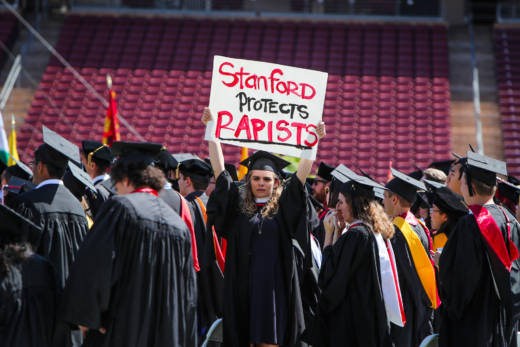A high-profile news report published this week has returned the national spotlight to frustrations over how sexual assaults on college campuses, in the Bay Area and nationwide, are handled by academic institutions.
The New York Times' new investigation released Thursday exposes a sexual assault charge on the campus of Stanford University and how multiple administrative panels left the accuser feeling abandoned.
National statistics show that is not an anomaly. More than one-in-five undergraduate women report being sexually assaulted during college, according to a study released by the Bureau of Justice Statistics in 2016. The majority of rape and sexual assault survivors said they were victimized by someone they knew. But the majority of those rapes or assaults go unreported. Only 7 percent of women who said they were raped reported the incident to a school official, according to the study.
Students are more likely to report sexual violence to their universities or colleges than to the police. But that's left institutions to strike a delicate balance between the legal right of the victim to have a safe campus, while maintaining a fair investigation for the accused.
In the New York Times report, a Stanford sophomore, who is now 22, revealed she went to the room of a football player during a frat party one night. She says he raped her. He says they had consensual sex.
Seeking to avoid the trauma of a police investigation, the accuser turned to the university’s in-house disciplinary board, one of many on college campuses that adjudicate sexual assault cases, and it would decide whom to believe. If the panel had found that sexual assault had taken place, the man could have been expelled.
Both times, three of the five panelists — drawn from a pool of administrators, faculty members and students — concluded that the man, who remained on the football team throughout the case and is on the roster for a bowl game Friday, committed sexual assault.
At many schools, this simple majority vote would have been enough to find the accused responsible. But Stanford had set an uncommonly high bar, requiring at least a 4-1 decision.
This year, amid growing dissent over how it handles these kinds of cases, Stanford changed its procedure in a way that victims' rights advocates say favors the accused. It now requires a unanimous verdict from a three-member board.

